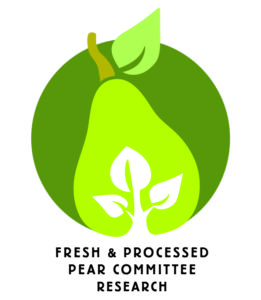Pear Research Reports
 On behalf of the Pacific Northwest pear industry, the Fresh and Processed Pear Committees have funded research related to crop protection, postharvest/fruit quality, horticulture, and genetics, as well as helping support Washington Tree Fruit Research Commission (WTFRC) technology projects with significant application for pear production. Final reports for those pear research projects completed since 2011 may be found below. Information regarding ongoing research projects will be posted here once their final reports are submitted; for access to reports from older pear projects or other research funded by the WTFRC on apple, cherry, stone fruit, and tree fruit technology, please consult our searchable database of research reports.
On behalf of the Pacific Northwest pear industry, the Fresh and Processed Pear Committees have funded research related to crop protection, postharvest/fruit quality, horticulture, and genetics, as well as helping support Washington Tree Fruit Research Commission (WTFRC) technology projects with significant application for pear production. Final reports for those pear research projects completed since 2011 may be found below. Information regarding ongoing research projects will be posted here once their final reports are submitted; for access to reports from older pear projects or other research funded by the WTFRC on apple, cherry, stone fruit, and tree fruit technology, please consult our searchable database of research reports.
